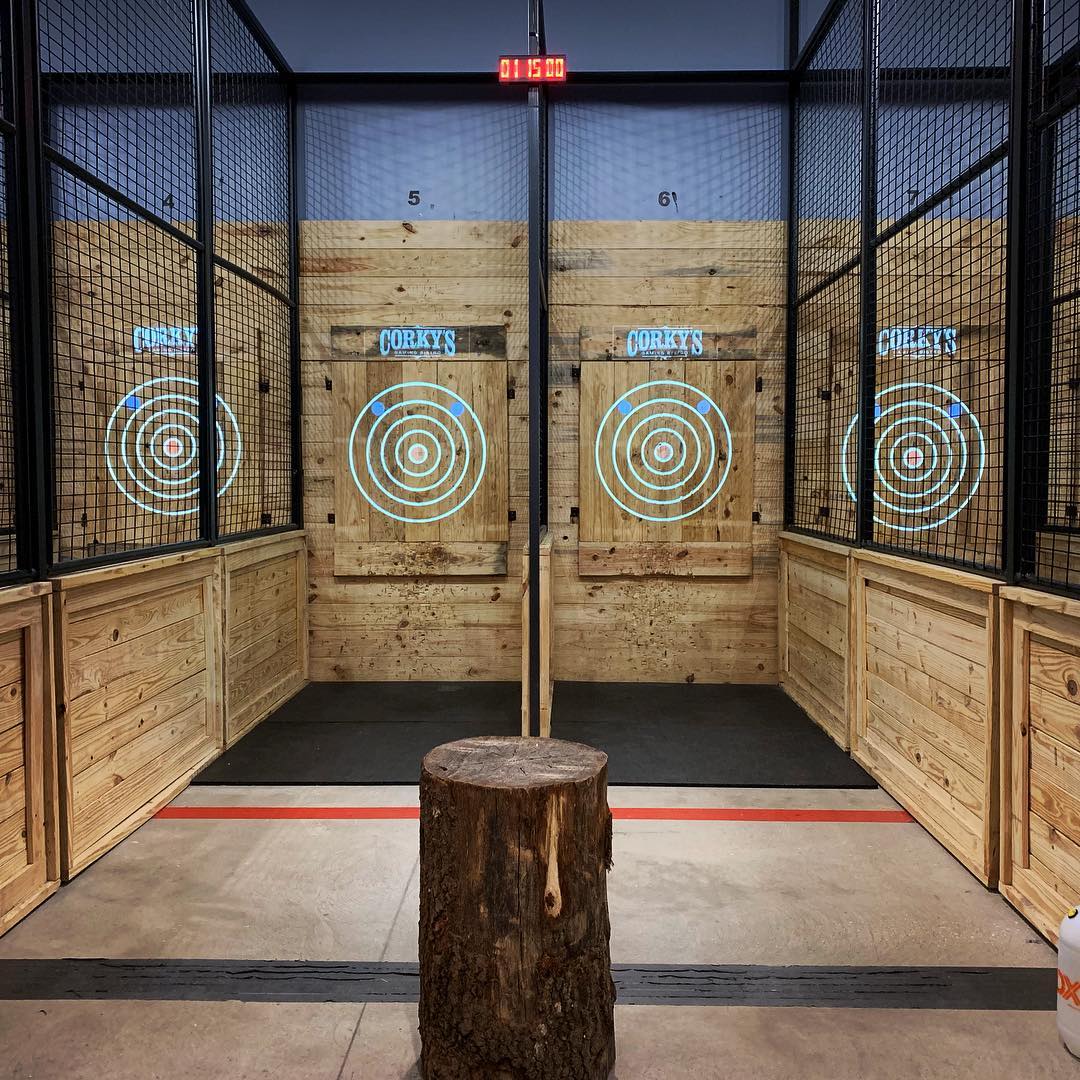Step Up Your Game with Axe Throwing Denver: Master Your Abilities Today
Step Up Your Game with Axe Throwing Denver: Master Your Abilities Today
Blog Article
The Fun of Axe Throwing: Exactly How This Sport Combines Skill and Adrenaline for a Fun Time
Axe throwing has become an astounding sport that masterfully links the requirement for specific ability with the thrill of adrenaline, offering individuals a unique and interesting experience. The act of tossing an axe in the direction of a target requires focus and strategy, at the same time fostering an atmosphere of camaraderie and pleasant competition. This fascinating mix of mental focus and physical exertion has actually made axe throwing a popular selection for those seeking both leisure and a feeling of achievement. To absolutely value the depth and charm of this task, one must consider its origins, the necessary devices, and the foundational techniques that make sure both safety and security and enjoyment.
The Origins of Axe Throwing
Axe throwing, a leisure task that has actually obtained substantial popularity in recent years, traces its origins back to ancient times. The earliest records of axe usage in competitive contexts are discovered among the Celts and Vikings, who threw axes for sporting activity as well as in combat training.
Medieval European warriors, especially during the Middle Ages, exercised axe tossing as component of their martial training. The Francisca, a kind of throwing axe used by the Franks, became legendary for its lethal precision. This conventional tool was made to be thrown at adversary guards and armor, showcasing its dual utility in both sport and fight.
In even more recent history, axe tossing saw a revival in the logging camps of The United States and copyright in the 19th and 20th centuries. Lumberjacks would certainly engage in friendly competition, testing their precision and toughness by targeting at wood targets. This evolution from a survival ability to a recreational task has actually led the method for its contemporary renewal, with devoted locations and organizations currently commemorating the sport worldwide.
Tools You Required
Understanding the abundant background of axe tossing enhances the recognition of the sporting activity's modern iteration. For recreational and competitive axe tossing, the most typically utilized kind is the hatchet, typically weighing in between 1.25 to 2 pounds with a deal with length of around 16 inches.
Just as vital is the target. Regulation targets are constructed from wood, with softwood varieties like want or cottonwood being liked for their capacity to take in and hold the axe. The target is generally divided into 5 concentric circles, each with a particular factor value, to promote scoring.
Safety and security equipment, though usually forgotten, is essential. Safety gloves can enhance grasp and avoid blisters, while closed-toed footwear are a must to protect feet from gone down axes (axe throwing denver co). A well-lit, sizable throwing location, total with safety obstacles, makes certain a controlled environment where participants can concentrate on honing their abilities.
Standard Techniques Discussed
Grasping the basic techniques of axe throwing is essential for both security and effectiveness. The leading hand ought to be placed directly below the axe head, while the non-dominant hand sustains the end of the handle.
Your dominant foot ought to be somewhat forward, straightening with your target. This positioning help in preserving stability and routing power accurately in the direction of the target.

Security First
Guaranteeing safety in axe throwing is paramount to developing an injury-free and satisfying experience. Safety and security gauges start with the location layout. A well-designed axe tossing facility features clear separations in between tossing lanes, strong backdrops to catch roaming axes, and non-slip flooring to stop mishaps. Additionally, appropriate lights is essential to aid participants maintain aesthetic precision and spatial recognition.
Benefits of Axe Throwing
Axe tossing deals a myriad of advantages that extend beyond basic leisure. The look at these guys repeated movement of This Site throwing the axe additionally boosts hand-eye sychronisation and great motor skills.
Emotionally, axe throwing requires emphasis, accuracy, and method, making it a superb means to develop cognitive abilities. The focus required to hit the target can work as a kind of mindfulness, allowing individuals to remove their minds and reduce stress. This psychological involvement can be particularly advantageous in helping individuals develop far better analytical abilities and mental resilience.
Socially, axe throwing is frequently enjoyed in group settings, fostering team-building and friendship. Whether as component of a company event or a casual getaway with good friends, the sport urges communication and collaboration. In addition, the public experience of discovering and boosting together can strengthen partnerships and create lasting memories.
Conclusion

The earliest documents of axe use in competitive contexts are located amongst the Celts and Vikings, that tossed axes for sport as well as in combat training. Launch the axe when your hands are approximately at eye level, allowing the axe's natural rotation to direct it towards the target.
A properly designed axe tossing center functions clear separations in between throwing lanes, sturdy backdrops to capture roaming axes, and non-slip floor covering to stop crashes. Participants should be advised on the proper method to throw the axe and take care of, emphasizing managed, calculated movements over strong check out this site throws.
In recap, axe tossing stands out as a sporting activity that masterfully incorporates skill, adrenaline, and accuracy.
Report this page